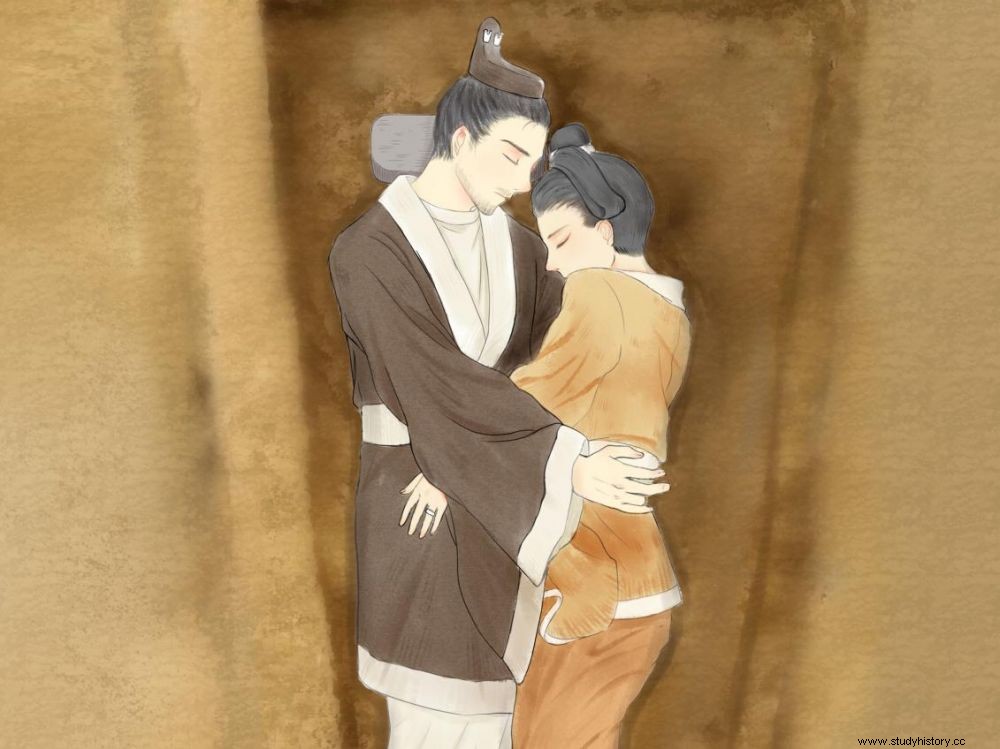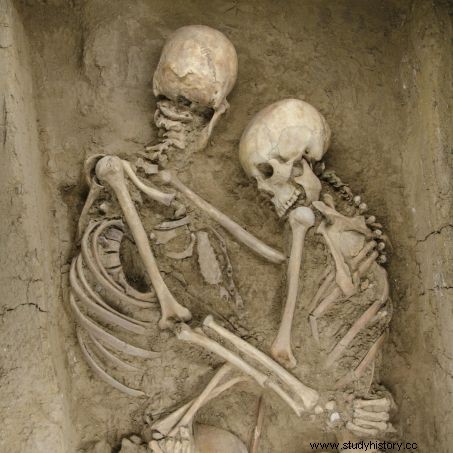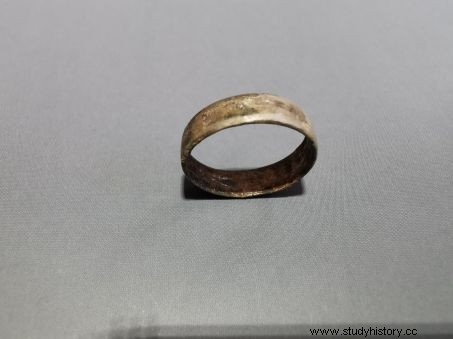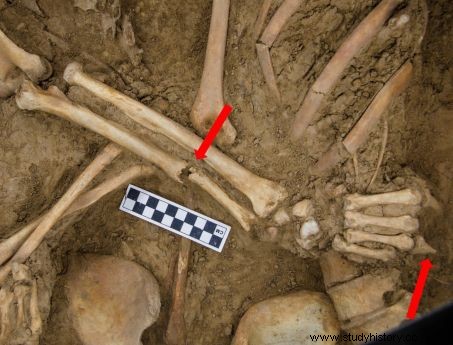An embracing couple has been discovered in a 1,500-year-old tomb in China. A moving discovery… And unprecedented in the country!

Illustrative image provided by the study's lead researcher, depicting the embrace of the couple discovered in China.
While the scene had already been observed in other countries, notably in Italy and Greece, this is the first time that archaeologists have discovered two skeletons intertwined on Chinese territory. The lovers would come from the Xianbei people, an ancient nomadic group from the Eurasian steppes established in northeast China and founder of the Northern Wei dynasty.
An unprecedented discovery in China
The discovery took place in northern China, in Shanxi province, near the city of Datong, where 600 tombs were exhumed. The excavations, led by the Institute of Archeology of Shanxi Province, began in 2020, and the resulting analyzes were published in the journal International Journal of osteoarcheology . Qun Zhang, a professor at Xiamen University and co-author of the study, told the South China Morning Post that "the size, shape, structure and orientation of the graves indicate that the cemetery was used by people of lowly origin e". It is the analysis of funerary objects and rites that has allowed researchers to link the cemetery to the Northern Wei dynasty, which reigned over northern China from 386 to 534.
Couple were found in a nose-to-nose position in three of the excavated graves, but only one was embracing. Joint burials for a couple are common:often the men and women are placed in separate coffins within the same burial chamber or in a single coffin, but always in a very upright position. Here, on the contrary, the position of the deceased expresses a mutual attachment:their heads face each other and their arms are intertwined.
While the scene had already been observed in other countries, notably in Italy and Greece, this is the first time that archaeologists have discovered two skeletons intertwined on Chinese territory. The lovers would come from the Xianbei people, an ancient nomadic group from the Eurasian steppes established in northeast China and founder of the Northern Wei dynasty.
An unprecedented discovery in China
The discovery took place in northern China, in Shanxi province, near the city of Datong, where 600 tombs were exhumed. The excavations, led by the Institute of Archeology of Shanxi Province, began in 2020, and the resulting analyzes were published in the journal International Journal of osteoarcheology . Qun Zhang, a professor at Xiamen University and co-author of the study, told the South China Morning Post that "the size, shape, structure and orientation of the graves indicate that the cemetery was used by people of lowly origin e". It is the analysis of funerary objects and rites that has allowed researchers to link the cemetery to the Northern Wei dynasty, which reigned over northern China from 386 to 534.
Couple were found in a nose-to-nose position in three of the excavated graves, but only one was embracing. Joint burials for a couple are common:often the men and women are placed in separate coffins within the same burial chamber or in a single coffin, but always in a very upright position. Here, on the contrary, the position of the deceased expresses a mutual attachment:their heads face each other and their arms are intertwined.

The two skeletons seem to be looking at each other, and their arms are crossed. Credits:Qian Wang
A silver ring as proof of love?
In addition, the woman wore a silver ring. This element intrigued the researchers:was it already, at that time, a proof of love?

The silver colored ring was found on the woman's left hand. Credits:Qian Wang
Although the evaluation of the wear stages of the teeth was not possible because the teeth of the skeletons had remained buried, the good state of preservation of the bones enabled the researchers to draw conclusions. information such as gender, height, age and overall health of individuals. According to the examinations conducted by the researchers, the man was approximately 1.60 meters tall and was between 29 and 35 years old. The woman, she was about 1.57 meters tall and was between 35 and 40 years old.

The man's skeleton reveals several wounds. Credits:Qian Wang
The male skeleton reveals that he suffered from several injuries, including an unhealed fracture in his arm, and a partially amputated finger. The researchers believe that the man died first and his lover later committed suicide, because while there are noticeable signs of trauma on the male skeleton, they did not notice any on the female. However, the study does not rule out other explanations, such as illness or poisoning. What the researchers are sure of is that the lovers were buried a short time apart, when their limbs were still flexible enough to be placed in the embrace position in which they were found.
"A rare insight into the concepts of love, life, death and afterlife in northern China"
Researchers read in this singular burial the attitude of the Ancients to love and death. While the expression of amorous feeling through the arts is known even for very ancient periods, notably through the poems of Shih Ching of the Zhou dynasty (1046 BC - 256 BC). ), archaeological evidence of love is rarer.
For researchers, this also highlights mechanisms of cultural transfer. The Wei dynasty had retained the traditions of the nomads from which it descended, but they evolved through contact with the Han people - the ethnic origin of the vast majority of Chinese today - and Western peoples who traveled the Silk Road - network of trade routes that connected Asia and Europe. For the authors of the study, in fact, the development of the expression of romantic feelings during the first millennium in China resulted from Western influence. Moreover, “under the Wei dynasty, Buddhism was popularized and the concept of the afterlife became more deeply rooted ” explains Qun Zhang, which could explain the attention paid to the position of the lovers at the time of their burial.
“This find is a unique manifestation of the human emotion of love in a tomb, offering rare insight into the concepts of love, life, death and life after death in northern China at a time of intense cultural and ethnic exchange sums up Qun Zhang.
